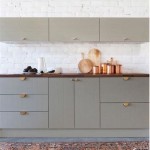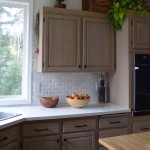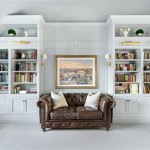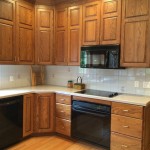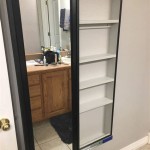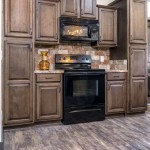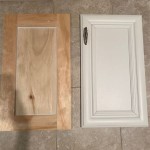Here is an article on upgrading kitchen cabinets:
How to Upgrade Kitchen Cabinets: A Comprehensive Guide
Kitchen cabinets are a focal point of any kitchen, significantly impacting its aesthetic appeal, functionality, and overall value. Over time, cabinets can become outdated, worn, or simply fail to meet the evolving needs of a home. Upgrading kitchen cabinets is a significant undertaking that can revitalize the entire kitchen space. This article provides a comprehensive guide to the various approaches one can take to upgrade kitchen cabinets, encompassing both minor and major transformations.
Before embarking on a cabinet upgrade project, it is crucial to assess the existing cabinets and determine the scope of the desired changes. This assessment should include an evaluation of the cabinet boxes' structural integrity. If the boxes are in sound condition, refacing or refinishing may be viable options. However, if the boxes are damaged beyond repair or the kitchen layout is no longer functional, complete replacement may be necessary. Budgetary constraints, desired style changes, and the homeowner's tolerance for disruption will also play a significant role in the decision-making process.
Refacing Kitchen Cabinets: A Cost-Effective Transformation
Refacing involves replacing the cabinet doors and drawer fronts while keeping the existing cabinet boxes intact. This approach is a cost-effective alternative to complete cabinet replacement, particularly when the existing cabinet boxes are structurally sound and the layout of the kitchen remains functional. Refacing can dramatically change the appearance of the kitchen without the significant expense and disruption associated with a full remodel.
The refacing process typically begins with removing the existing doors, drawer fronts, hinges, and hardware. The cabinet boxes are then thoroughly cleaned and prepared for the new veneer. A thin layer of wood veneer or laminate is applied to the exposed surfaces of the cabinet boxes, covering the existing finish. New doors and drawer fronts, chosen in the desired style and material, are then installed along with new hinges and hardware. The result is a kitchen that looks completely refreshed, with a significant portion of the existing structure preserved.
Choosing the right materials for refacing is paramount. Wood veneer offers a natural look and can be stained or painted to match the desired aesthetic. Laminate is a more durable and cost-effective option, available in a wide range of colors and patterns. The selection of doors and drawer fronts also plays a crucial role in the overall look. Options range from traditional raised-panel doors to sleek, modern slab doors. The hardware, including knobs, pulls, and hinges, should complement the chosen style and finish, adding the finishing touches to the transformation.
While refacing is a less disruptive option than cabinet replacement, it is still essential to prepare the kitchen space for the project. This includes removing all items from the cabinets and covering the surrounding surfaces to protect them from dust and debris. The refacing process can take several days to complete, depending on the size and complexity of the kitchen. Professional installation is highly recommended to ensure a seamless and durable finish.
Refinishing Kitchen Cabinets: Enhancing Existing Beauty
Refinishing involves stripping the existing finish from the cabinet doors and drawer fronts, repairing any minor damage, and applying a new stain or paint. This option is suitable for cabinets that are in good condition but have a dated or worn finish. Refinishing can restore the natural beauty of wood cabinets or completely transform their appearance with a new color palette.
The refinishing process typically begins with removing the doors and drawer fronts from the cabinet boxes. The hardware is also removed, and the doors and drawer fronts are thoroughly cleaned to remove any dirt, grease, or residue. The existing finish is then stripped using chemical strippers or sanding. The stripped surfaces are inspected for any damage, such as scratches or dents, and these are repaired using wood filler or patching compounds. The surfaces are then sanded smooth to prepare them for the new finish.
Choosing the right stain or paint is critical for achieving the desired look. Stain enhances the natural grain and texture of the wood, while paint provides a solid, uniform color. The selection of stain or paint should complement the overall style of the kitchen and the existing countertops, flooring, and appliances. A clear topcoat, such as polyurethane or varnish, is typically applied to protect the finish and provide durability.
The cabinet boxes are also prepared for refinishing. They are cleaned, sanded, and primed to ensure proper adhesion of the new finish. The same stain or paint used on the doors and drawer fronts is applied to the cabinet boxes, creating a cohesive look. New hardware is then installed, completing the refinishing process.
Refinishing is a labor-intensive process that requires careful attention to detail. Proper preparation is essential for achieving a professional-looking finish. DIY enthusiasts can tackle this project, but professional refinishing services are also available. Professional refinishers have the expertise and equipment to achieve a flawless finish that will last for years to come.
Replacing Kitchen Cabinets: A Complete Transformation
Replacing kitchen cabinets involves removing the existing cabinets and installing new ones. This is the most comprehensive and expensive option, but it offers the greatest opportunity to completely transform the kitchen layout, style, and functionality. Replacement is often the best choice when the existing cabinets are severely damaged, the kitchen layout is no longer functional, or a significant style change is desired.
The cabinet replacement process begins with carefully planning the new kitchen layout. This involves considering the location of appliances, countertops, and sinks, as well as the overall flow of the kitchen. The new cabinets are selected based on the desired style, material, and functionality. Options range from stock cabinets, which are pre-made in standard sizes, to semi-custom cabinets, which offer some customization options, to fully custom cabinets, which are built to the homeowner's exact specifications.
The existing cabinets are carefully removed, and the kitchen is prepared for the new installation. This may involve repairing any damage to the walls or flooring. The new cabinets are then installed, starting with the base cabinets and followed by the wall cabinets. The cabinets are leveled and secured to the walls, ensuring a solid and stable installation. Countertops, sinks, and appliances are then installed, completing the kitchen transformation.
Choosing the right type of cabinets is crucial for achieving the desired look and functionality. Stock cabinets are the most affordable option, but they offer limited customization options. Semi-custom cabinets provide a balance between affordability and customization. Fully custom cabinets offer the greatest flexibility in terms of design and materials, but they are also the most expensive option.
The installation of new kitchen cabinets is a complex project that requires specialized skills and tools. Professional installation is highly recommended to ensure a proper and safe installation. Professional installers have the experience and expertise to handle any challenges that may arise during the installation process, ensuring a beautiful and functional kitchen that will last for years to come.
Considerations such as plumbing and electrical rerouting might be needed during a full replacement. These modifications should be handled by qualified professionals to ensure compliance with building codes and safety standards. Furthermore, homeowners should obtain necessary permits before commencing any major kitchen renovation project, including cabinet replacement.
When selecting new cabinets, material choice is paramount. Solid wood cabinets offer durability and a classic aesthetic, but they can be more expensive and require more maintenance. Plywood cabinets are a more affordable and stable alternative to solid wood. Particleboard or MDF (Medium-Density Fiberboard) cabinets are the least expensive option, but they may not be as durable as solid wood or plywood. The choice of material depends on budget, desired aesthetic, and durability requirements.
Ultimately, the decision of how to upgrade kitchen cabinets depends on factors such as budget, the condition of the existing cabinets, and the desired aesthetic. Thoroughly assessing these factors will aid in selecting the most suitable option for transforming the kitchen.

25 Easy Ways To Update Kitchen Cabinets

Upgrade Kitchen Cabinets On A Budget

Diy Kitchen Cabinet Upgrade With Paint And Crown Molding

10 Simple Ideas To Update Your Kitchen Cabinets Jenna Sue Design

21 Diy Affordable Ways To Redo Kitchen Cabinets Extra Space Storage

How To Paint Your Kitchen Cabinets Houzz

7 Ways To Make Your Kitchen Cabinets Look Expensive

10 Simple Ideas To Update Your Kitchen Cabinets Jenna Sue Design

5 Signs Your Kitchen Cabinets Need Updated Quad City Bath

21 Diy Affordable Ways To Redo Kitchen Cabinets Extra Space Storage
Related Posts


